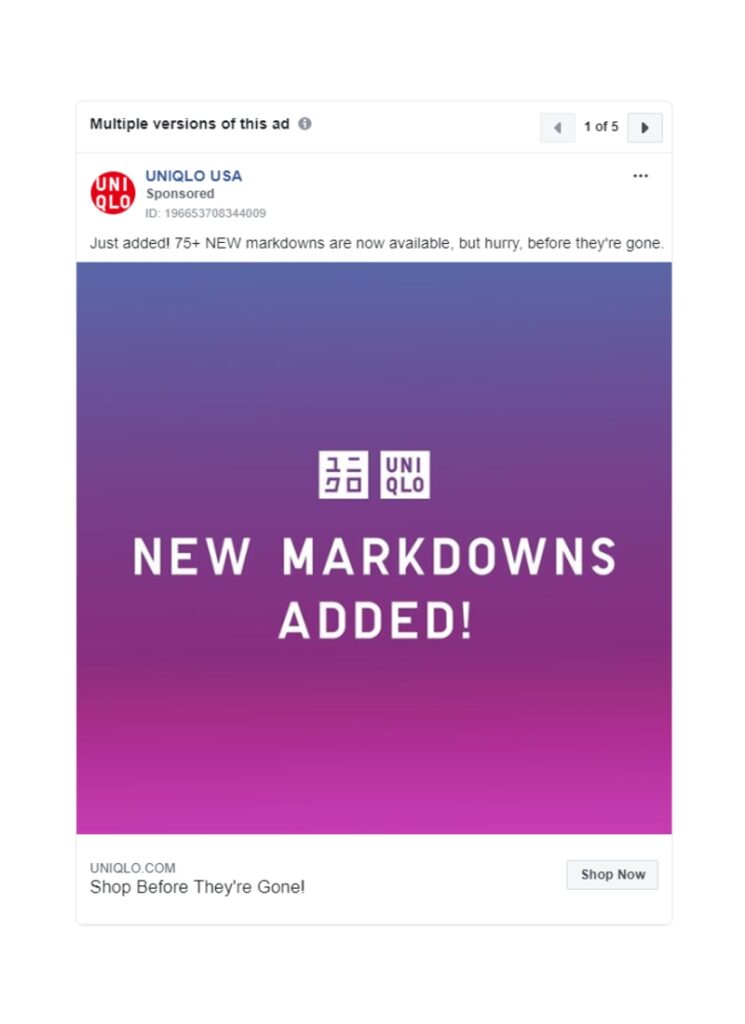31 Jul

Copywriting takes time to master. You don’t need formal training for it, but you can take online courses and practice it for your business. You might even have to undertake different copywriting tasks. Maybe, you might become a copywriter in advertising or marketing campaigns, so you’ll need to sharpen your persuasion skills and the like to get that sale. It may be challenging to write an effective or compelling ad copy. All you need is practice, and learn what experts do when they write a copy for advertisements.
In this article, I list down ten tips on how to create compelling ad copy for your business.
1. Read & Research
Before you start writing anything, you need to conduct your research.
- Who are you writing the advertisement for?
- What’s your advertising campaign?
- What should the ad copy contain?
- How do you connect with your target audience?
As a copywriter in advertising, research is always vital. You learn more each time as you get to craft a copy.
You can take inspiration from other ads that appeared on Google or social media sites like Facebook or Twitter. That way, you see how your competitors or other copywriters create ads for their businesses.
2. Keep Your Customers in Mind
Always, always keep the customer, prospect, or lead in mind. After all, you’re selling them the product or service. So, as a copywriter in advertising, you need to get into their mindset. To do that, you can do these three things:
- Do Keyword Research
Learn what your customers search for your product. Let’s say you’re selling headphones. So, you need to use a keyword research tool like Ubersuggest or Google Trends to see how your audience is searching for that particular item. From there, you can find keywords that you can incorporate in your advertisement.
- Use “you, we, us, they”
You always have to connect with your customer. The word “you” is the widely used pronoun, and you should apply it the most. The use of other pronouns can help in talking to the customer personally.
- Make them “Say Yes”
Remember old advertisements asking viewers or customers, “has this ever happened to you?” It’s a technique to get into their mindset. It’s still a common practice by advertising copywriters. You want them to agree with what you’re saying. You want to use a general experience that’s relatable to your audiences. That way, you get them hooked. That’s how you can introduce your product or service to them.
3. Appeal to Emotion
Have you ever noticed how some of the best ads try to reach out to you through emotional triggers? It’s become the practice of many advertising copywriters. If used effectively, you can increase sales volume by up to 23%.
The bottom line is you want to make your customers or users feel good about the product or service they’re using. For example, you’re selling video game controllers. A copywriter in advertising would say that the grips wouldn’t make the customer feel pain even after playing for hours.
4. Integrate Storytelling
In cases where you get an opportunity to compose a longer advertising copy, incorporate storytelling. Storytelling can further improve your connection with the audience. You want them to relate to a particular scenario or situation that will get them to buy or avail of your service.
Even if design or video could tell a story visually, a compelling copy can still engage with customers. As some experts would advise, you can tell a story by visualization.
For example, you’re selling travel mugs. Let’s say an office worker uses a communal cup. Tell a story about how communal mugs can make them sick, for example. You can pitch your travel mug, so they don’t have to share with other people in the office. Plus, you’ll reduce sick days by using your mug.
5. Keep it Clear and Concise
Perhaps you can’t make a long ad copy, and you’ll then have to resort to crafting a short but impactful copy. But if you think about it, you need to keep the ad copy simple.
Experts say humans have an 8-second attention span. At that time, you need to captivate them. Your copy could do that. So, make it concise, clear, and straightforward. You don’t want to dilly-dally.
As a copywriter in advertising, use jargon sparingly as well. Remember who your target audience is. You’ll most likely use jargon if you’re writing for B2B companies. Your audience knows what you’re talking about. But make sure to simplify it and provide benefits.
Let’s say you’re selling clothes for the younger generation. Maybe your target audience is Gen Z, try to use lingo that will get them to interact with your brand. Make sure not to make them cringe. You can use emojis as an alternative.
Another technique to make it clear is to use active voice. It indicates directness. Plus, when you use passive voice, it might get misinterpreted. It’s the best practice by most advertising copywriters.
6. Activate Power Words

Make an impact by incorporating power words into your copy. Power words can evoke emotions or could persuade your customer to take action.
The best way to use power words is on your Call to Action (CTA). It’s how you’ll make people click on the ad. That way, they can visit your website or eCommerce store, browse, and buy.
Here’s an example from Casper’s Twitter ad. Most would use the Shop Now or Buy Now CTA. However, they used a custom CTA by saying, “Save big. Sleep better.” It’s befitting the mattress company’s tone and message.
7. Emphasize Benefits
It’s good that you have features on your copy. People get an idea of the components of your product or features of your service. However, you need to make it more colorful by adding benefits to it.
Remember this phrase: Show don’t tell. It’s easy to list features, but how does it help your customer?
Weave benefits into your features, make the transition from benefits to features seem natural in writing. Give them a reason why they should buy the product or avail of the service. Make them understand how this product will provide comfort or ease. Perhaps, it could make them feel attractive or great.
For example, you want customers to buy a new pair of shoes. You say they have cushions inside. But what makes your shoes different from other pairs? You could say they bring all-day comfort to your feet.
8. Create a Sense of Urgency

Use the Fear of Missing Out (FOMO) technique. Make them feel that if they don’t have the product or service, they’re not “in.” That your items have limited stock or you’re reducing prices for a specific timeframe. For example, you might only limit free shipping until a certain hour or date.
Here’s how Uniqlo USA created the copy for their ad. They want to stress that they applied markdowns for some products, which is available for a limited time. It will make you click on the ad because you’re curious about which items you could buy during the sale.
9. Add Data & Social Proof

Entice your target audience by adding numbers to your ad copywriting. Data is always an excellent way to capture your audience’s attention. Discounts and statistics are two of the most common numbers used in advertisements. As copywriters in advertising, you know the importance of adding numbers. Customers will pause to see a discount and determine if it’s something worth purchasing.
Here’s an example from Aeropostale. They have deals ready for their customers, and it’s 50 to 70% off on the website. Plus, they used the numbers on the design and the advertisement copy. It’s to emphasize the sale.
Another way to captivate your audience is by using social proof. Social proof is a way where you can have people vouch for your products or service. You can raise your credibility and become an authority when you add social proof.
Here are examples of social proof you can add to your advertisement:
- Reviews
- Testimonials
- Wisdom of the Crowd
- Celebrity Endorsement
- Media Shoutout
If you have any of these on your ad, prospects or customers might check out your ad. After all, you want to prove something to your customers. They want to see if your product or service is worth using.

An example of social proof in action is this video advertisement from Pampers. They incorporated reviews from mothers that were satisfied with the use of the diapers.
10. Proofread & Edit
Before you publish your ad to the world, you should always have it checked by an editor or writing tools. This way, you could further improve the copy. Expect that your first draft won’t go so well. It doesn’t have to sound perfect the first time. So, don’t beat yourself up for it.
Another way to have your copy edited or proofread is to have another pair of eyes check it. It doesn’t have to be your editor. You can ask a colleague or another person and ask them how you could improve your copy. What can be missing there?
What are the tools or resources you can use to improve your copywriting?
- Grammarly
This is a lifesaver for any copywriter in advertising. You don’t have to subscribe to a plan to have your writing edited. It’s one of the best tools out there, and you should use it at all times.
However, you get more out of your Grammarly account if you subscribe to the Premium plan.
- Hemingway
The Hemingway App is a free software application that will check if your text is readable for your audience. Plus, they also check adverbs, passive voice, and word usage.
They have a readability score in place. So, if you score Grade 12, it’s understandable for 12th graders and above. You don’t have to aim for a specific grade. The lower the grade level, the more would understand your text
- Coschedule Headline Analyzer
This works best if you have a headline on your advertisement. This tool analyzes if the ad headline is worth reading. Aim for a score of 70. It means your ad headline is enough to entice your customer to read the rest of your ad.
Final Thoughts
It can take a while to create a compelling ad copy for your business. Even a copywriter in advertising and experts continue to hone their craft through practice and learning. However, through these tried and tested tips, you can start building confidence to write better and compelling ad copies for your campaigns.










